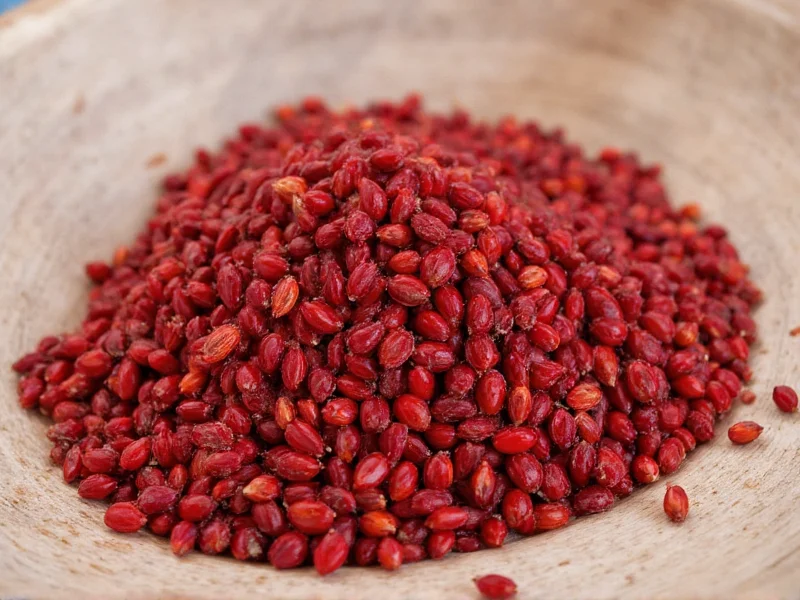Sumac, a deep red spice made from ground sumac berries, delivers a unique lemony tang that elevates Middle Eastern and Mediterranean dishes. When you can't find this specialty ingredient, knowing effective substitutes ensures your recipes maintain their intended flavor profile without compromising authenticity.
Understanding Sumac's Flavor Profile
Before exploring substitutes, it's essential to understand what makes sumac special. This tart spice provides:
- A bright, citrus-like acidity without liquid moisture
- Subtle earthy, floral notes
- A vibrant red color that enhances visual appeal
- Complexity that balances rich meats and fresh salads
Sumac appears prominently in dishes like fattoush salad, za'atar blends, and as a finishing spice for grilled meats. Its pH level (around 2.5-3.0) creates that distinctive tang that many substitutes attempt to replicate.
Top 5 Sumac Substitutes Ranked by Effectiveness
Not all alternatives work equally well across different recipes. Here's how common substitutes compare:
| Substitute | Best For | Ratio (vs 1 tsp sumac) | Flavor Match | Color Match |
|---|---|---|---|---|
| Lemon juice + paprika | All-purpose cooking | ½ tsp lemon juice + ½ tsp paprika | 9/10 | 8/10 |
| Za'atar spice blend | Mediterranean dishes | 1¾ tsp za'atar | 8/10 | 7/10 |
| Amchoor (mango powder) | Indian recipes | 1 tsp amchoor | 7/10 | 3/10 |
| Vinegar + paprika | Dry rubs and marinades | ½ tsp vinegar + ½ tsp paprika | 6/10 | 7/10 |
| Cranberry powder | Salad dressings | 1 tsp cranberry powder | 5/10 | 9/10 |
Detailed Substitute Analysis
Lemon Juice and Paprika Combination
This accessible sumac alternative works because lemon juice provides the essential tartness while paprika contributes earthiness and color. When substituting in recipes like fattoush salad or grilled chicken, add the lemon juice early in cooking to allow flavors to meld, then sprinkle paprika at the end for visual appeal. This combination serves as the most reliable option when wondering what can I use instead of sumac in recipes that require both flavor and color.
Za'atar Spice Blend
Za'atar contains sumac as a primary ingredient (typically 30-50%), making it an excellent substitute when sumac plays a supporting role. Use 1¾ teaspoons of za'atar for every teaspoon of sumac required. This works particularly well in labneh spreads or as a bread dip. Note that za'atar includes thyme and sesame seeds, which will alter the final flavor profile slightly—making it ideal for sumac alternative for fattoush salad but less suitable for recipes where sumac should dominate.
Amchoor (Dried Mango Powder)
Popular in Indian cuisine, amchoor delivers a similar tartness through natural fruit acids. While it lacks sumac's red hue, its pH level (3.0-3.5) closely matches sumac's acidity. Use a 1:1 ratio when substituting in dry rubs or stews. This works best as a sumac substitute for chicken recipes with Middle Eastern-Indian fusion elements, but won't replicate the visual component.
Vinegar-Based Alternatives
For recipes where liquid content won't affect texture (like marinades), combine equal parts vinegar (apple cider or white wine) with paprika. The vinegar provides acidity while paprika adds color and earthiness. This method works well as a lemon juice instead of sumac alternative when fresh citrus isn't available. Add gradually and taste as you go—vinegar's sharper acidity requires careful balancing.
Cranberry Powder
Dried cranberries ground into powder offer surprising similarity to sumac's tart profile with nearly identical color. Use a 1:1 ratio in salad dressings or as a finishing spice. While not traditional in Middle Eastern cooking, this substitute shines in sumac alternative for salad recipes where visual presentation matters. The natural fruit sugars create a slightly different flavor profile, so avoid in savory meat dishes.
When Substitution Quality Matters Most
Not all recipes demand perfect sumac replication. Consider these factors when choosing your substitute:
- Dry applications (like spice rubs): Prioritize paprika-based blends to maintain texture
- Wet applications (like dressings): Lemon juice or vinegar work better
- Color-critical dishes (like fattoush): Choose options with paprika or cranberry
- Authenticity-focused cooking: Za'atar provides the most culturally appropriate alternative
Professional chefs note that sumac's unique combination of malic, citric, and tannic acids creates a complexity difficult to replicate exactly. For critical applications like traditional sumac substitute for manakish za'atar, consider ordering sumac online rather than substituting.
Creating Your Own Sumac Substitute Blend
For consistent results across multiple recipes, prepare this versatile blend:
Basic Sumac Substitute Blend
• ¼ cup paprika
• 2 tablespoons freeze-dried lemon zest powder
• 1 teaspoon ground coriander
• ½ teaspoon allspice
Mix thoroughly and store in an airtight container for up to 6 months. Use a 1:1 ratio in most recipes. The lemon zest powder provides concentrated citrus flavor without moisture, while coriander and allspice add subtle complexity that mimics sumac's earthy notes. This homemade sumac substitute recipe works particularly well for dry rubs and spice blends.











 浙公网安备
33010002000092号
浙公网安备
33010002000092号 浙B2-20120091-4
浙B2-20120091-4